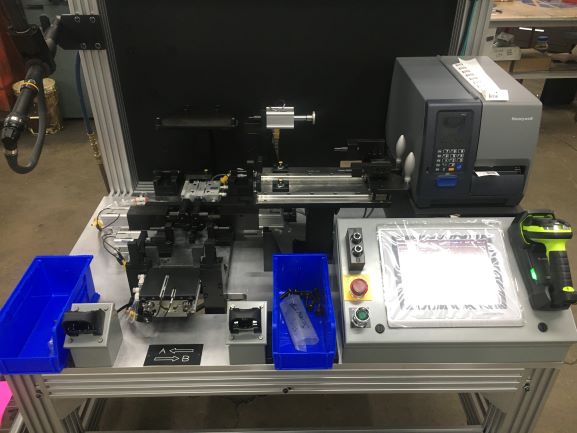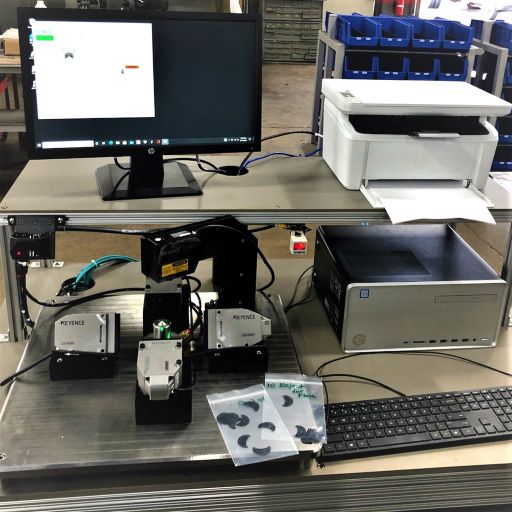Data Collection & Part Traceability
How can I efficiently use data collection to increase process visibility to let my customer know their part was made correctly?
Data gained from part traceability systems are vital knowledge in a mass production environment. It confirms your operators and machinery produced a part correctly, and allows your company to make decisions that drive future success and growth. So how can you implement part traceability in a way that actually gives you the information you need from a process?
To get the right data from a process, you need to use the right equipment built with the right plan. From lot traceability barcode reading built into welding fixtures, to inspection machinery built with PC-driven controls to allow data export to easy-to-use programs like Microsoft Excel, Stryver has the experience necessary to build machinery that is both capable of completing a task, and verifying the processing required to complete the task was done correctly. Let us help you create a data-driven solution based on an analysis of your process and its pain points. Please review below for some examples of process verification built into Stryver machinery:
Bolt Torquing Assembly Station Fastening Safety-Critical Components
The assembly station featured above assists an operator with fastening a seat back to a seat cushion. This assembly process is safety critical. Failure will result in the car builder requiring a 100% inspection of all parts coming in, which is a very expensive quality cost to bear for the seat manufacturer. To ensure the operator followed the processing sequence correctly, multiple poke-yokes were built into this assembly station to require a certain process sequence be followed for assembly. A custom torque bit station was machined, with detection to ensure each bit is used at the proper time. Bin pick sensors are used to ensure parts are pulled at the right time in the sequence. The PLC controls the torque gun’s function and does not allow it to fire until a certain point in the process sequence. Stryver worked with the customer to recommend and implement a poke-yoke plan, analyzing possible failure modes and created a mitigation plan for each.

Medical Device Thickness Inspection Gage with Windows PC-based Controls Only
The custom machine featured inspects the thickness of a thin film used in a medical device. The device uses Keyence high-speed, high accuracy digital micrometers to complete this thickness inspection. Data values collected from these devices are exported to a Windows-based PC and compiled into a CSV file. Microsoft Excel is installed on to the machine’s PC to allow the operator to view the data readings on-site. I/O was added to the PC to allow the machine to operate entirely from the PC itself. Not only did this electrical design plan save cost, it also minimized design & build lead time and simplified the overall controls design plan.

Welded Subcomponent Part Traceability with Barcode Scanning Built into Weld Fixture
The welding fixture pictured has Keyence barcode scanners built into the design. These scanners grab the information from the barcodes of each component assembly loaded into the fixture, and export the data into the lot traceability system built into the welding assembly line. The lot traceability system marries the part types together as a data package, much like how the welding fixture itself marries the subcomponents into one cohesive welded assembly. If a quality issue occurs with a subcomponent, the number of parts sorted and/or rejected by the customer is significantly reduced, because only assemblies made with the subcomponent in question are rejected. Previously entire assemblies tied to a date and time range would have to be rejected, at a tremendous cost to Stryver’s customer. Let Stryver help your company determine a plan to best minimize the possibility and impact of failure through data-driven automation solutions.
